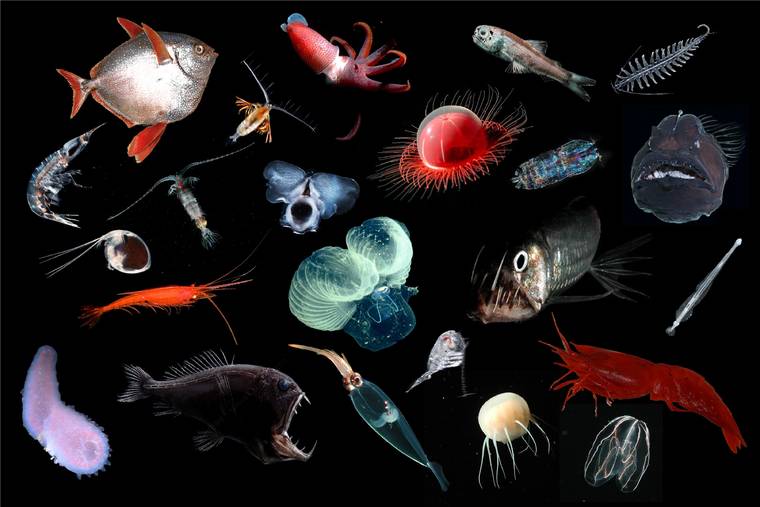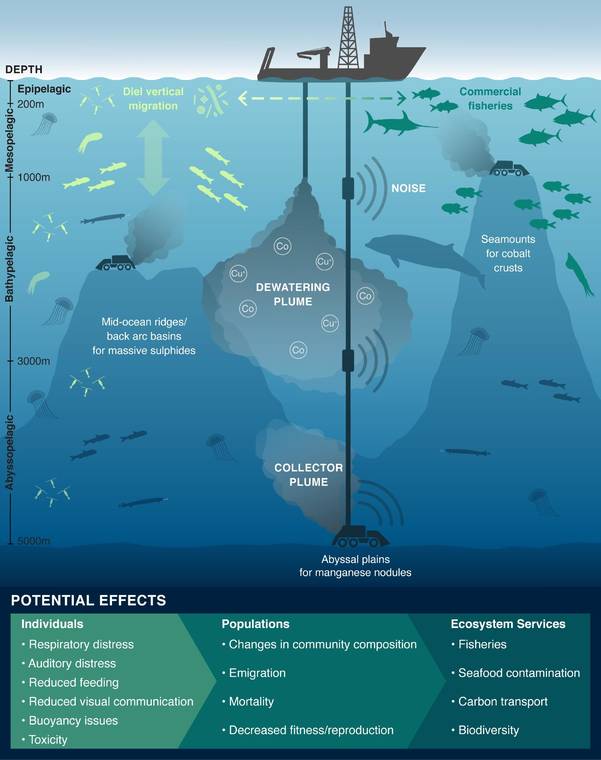Interest in deep-sea mining for copper, cobalt, zinc, manganese and other valuable metals has grown substantially in the last decade and mining activities are anticipated to begin soon.
A new study published in Proceedings of the National Academy of Science, led by University of Hawaii at Manoa researchers, argues that deep-sea mining poses significant risks, not only to the area immediately surrounding mining operations but also to the water hundreds to thousands of feet above the seafloor, threatening vast midwater ecosystems. Further, the scientists suggest how these risks could be evaluated more comprehensively to enable society and managers to decide if and how deep-sea mining should proceed.
Currently 30 exploration licenses cover about 580,000 square miles of the seafloor on the high seas and some countries are exploring exploitation in their own water as well. Thus far, most research assessing the impacts of mining and environmental baseline survey work has focused on the seafloor.
However, large amounts of mud and dissolved chemicals are released during mining and large equipment produces extraordinary noise — all of which travel high and wide. Unfortunately, there has been almost no study of the potential effects of mining beyond the habitat immediately adjacent to extraction activities.
“This is a call to all stakeholders and managers,” said Jeffrey Drazen, lead author of the article and UH Manoa’s School of Ocean and Earth Science and Technology (SOEST) professor of oceanography. “Mining is poised to move forward yet we lack scientific evidence to understand and manage the impacts on deep pelagic ecosystems, which constitute most of the biosphere. More research is needed very quickly.”
First look at potential threats
The deep midwaters of the world’s ocean represent more than 90% of the biosphere, contain 100 times more fish than the annual global catch, connect surface and seafloor ecosystems, and play key roles in climate regulation and nutrient cycles. These ecosystem services, as well as untold biodiversity, could be negatively affected by mining. The paper provides a first look at potential threats to this system.
“Hawaii is situated in the middle of some of the most likely locations for deep-sea mining,” said Drazen. “The current study shows that mining and its environmental impacts may not be confined to the seafloor thousands of feet below the surface but could threaten the waters above the seafloor, too. Harm to midwater ecosystems could affect fisheries, release metals into food webs that could then enter our seafood supply, alter carbon sequestration to the deep ocean, and reduce biodiversity which is key to the healthy function of our surrounding oceans.”
Managing to avoid harm
In accordance with the United Nations Convention on the Law of the Sea, the International Seabed Authority is required to ensure the effective protection of the marine environment, including deep midwater ecosystems, from harmful effects arising from mining-related activities. In order to minimize environmental harm, mining impacts on the midwater column must be considered in research plans and development of regulations before mining begins.
“We are urging researchers and governing bodies to expand midwater research efforts, and adopt precautionary management measures now in order to avoid harm to deep midwater ecosystems from seabed mining,” said Drazen.
Funding for this work was provided by the Schmidt Ocean Institute and the Gordon and Betty Moore Foundation.




